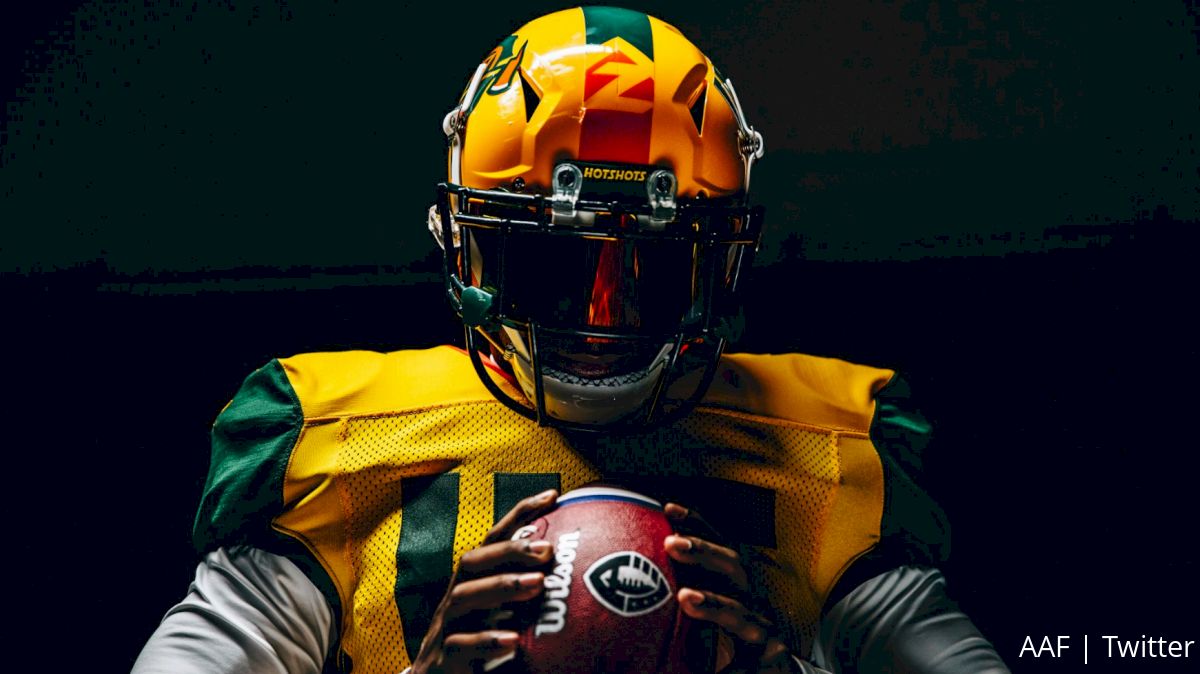AAF 101: A Crash Course On The Alliance Of American Football
AAF 101: A Crash Course On The Alliance Of American Football
The Alliance of American Football kicks off this weekend with eight teams of 52 players embarking upon its inaugural 10-week season.

It is with a substantial level of excitement that we must acknowledge, for the first time in a very, very long time, football did not end with a thud at the conclusion of Sunday night’s snooze fest of a Super Bowl.
The Alliance of American Football kicks off this weekend with eight teams of 52 players embarking upon its inaugural 10-week season.
The Alliance begins. #JoinTheAlliance pic.twitter.com/oGnt9fBOl8
— The Alliance (@TheAAF) February 3, 2019
For most part, pigskin is pigskin, so the learning curve for fans of the new league will be relatively minor.
Of course, there are a few notable nuances worth mentioning, along with a whole bunch of pivotal players, coaches and leaders involved. With that in mind, we’ve cooked up a little AAF appetizer to get you acclimated ahead of time.
The Teams
Again, the AAF consists of eight teams:
- Arizona Hotshots
- Atlanta Legends
- Birmingham Iron
- Memphis Express
- Orlando Apollos
- Salt Lake Stallions
- San Antonio Commanders
- San Diego Fleet
The Schedule
The season kicks off with San Diego at San Antonio, while Atlanta visits Orlando, on Saturday, Feb. 8. The remaining four teams will take the field on Sunday.
From there, it’s 10 weeks of action with no byes, with all but one regular season game (San Antonio at Salt Lake on Friday, April 12) played on either Saturday or Sunday.
The 2019 Alliance of American Football Inaugural Season Schedule is here ?#JoinTheAlliance pic.twitter.com/sK40g8x9Wb
— The Alliance (@TheAAF) October 16, 2018
The semifinals will be played April 20-21, followed by the league’s inaugural championship game on Saturday, April 27.
The Coaches
One of the most impressive things about the AAF is its roster of coaches. These are names we all know and for good reason.
- Rick Neuheisel (Hotshots)
- Kevin Coyle (Legends)
- Tim Lewis (Iron)
- Mike Singletary (Express)
- Steve Spurrier (Apollos)
- Dennis Erickson (Stallions)
- Mike Riley (Commanders)
- Mike Martz (Fleet)
When Coach Neuheisel talks, we listen! #GoShots pic.twitter.com/SXqbz3AluV
— Arizona Hotshots (@aafhotshots) February 5, 2019
Additionally, the league is home to an intriguing list of assistants, including Legends offensive coordinator Michael Vick and Apollos defensive coordinator Bob Sanders.
The In-Game Difference
The runtime of an AAF game will differ significantly than what we’ve become used to with the NFL and NCAA.
There will be zero television timeouts, which means in the ballpark of 60 percent fewer commercials and a half-hour shorter game than the NFL.
Additional unique wrinkles include:
- No kickoffs. Teams will simply start each possession at their own 25-yard line.
- No onside kicks. Instead, teams will have the option to make-it-take-it, so to speak, beginning a new drive with 4th and 10 from their own 35. Convert and they keep the ball.
- No extra points. Two-point conversions only.
The Players
These guys aren’t strangers.
Former Alabama great Trent Richardson will be carrying the rock for Birmingham. Bishop Sankey and Josh Johnson will be in the backfield at running back and quarterback, respectively, for San Diego.
⚓️RB @BishopSankey was the No. 1⃣ back taken in the 2014 draft. Back after a knee injury, he discusses what he's learning from former @umterps great, NFL star and current @AAFFleet Running Backs Coach @CoachJordan34. #FleetTrainingCamp #GreatestShowOnSurf @TheAAF pic.twitter.com/9QzqjQmLB1
— SDFleetPR (@PrFleet) January 15, 2019
Other notables include:
- Trevor Knight, Hotshots (QB) — Oklahoma
- BJ Daniels, Stallions (QB) — South Florida
- David Cobb, Commanders (RB) — Minnesota
- Daryl Richardson, Commanders (RB) — Six-year NFL vet out of Abiliene Christian
- Matt Asiata, Stallions (RB) — Six-year NFL vet out of Utah
- Will Hill, Apollos (DB) — Florida
- Christian Hackenberg, Express (QB) — Penn State
- Zach Mettenberger, Express (QB) — LSU
- Zac Stacy, Express (RB) — Vanderbilt
- Aaron Murray, Legends (QB) — Georgia
- Stephen Hill, Legends (WR) — Georgia Tech
- Scooby Wright, Hotshots (DE) — Arizona
The Leadership & Its Purpose
The league was co-founded by filmmaker Charlie Ebersol and former NFL general manager Bill Polian.
Troy Polamalu is the head of players relations. Hines Ward and Jared Allen are players relations executives. Justin Tuck will serve on the player engagement board of advisors.
Unlike the XFL — both 1.0 and the coming second iteration — the AAF is not designed to compete against the NFL. Rather, it is being positioned as a complement and a means for further player development.
"It's an opportunity to showcase your talent."
— The Alliance (@TheAAF) February 3, 2019
CEO/Co-Founder @CharlieEbersol and Head of Football Development @mvp86hinesward discussed all things Alliance this week on @nflnetwork. pic.twitter.com/ipjl4O3K7C
In addition to respectable player salaries, the athletes competing in this league will be compensated in the form of bonuses for performance-based statistical achievements, good ol’ fashioned wins and “fan engagement.”
What does that last part mean? That’s still a little unclear, but the overarching concept, here, seems to be the encouragement of player-fan interaction. By incentivizing engagement with the new fans of this league, the AAF seems to be attempting to bridge the gap between athlete and a non-athletic regular person.
It’s also worth mentioning that scholarships will be part of the player compensation package, as the league looks to encourage its pros to begin building a post-playing career plan for continued success.
Coverage
The AAF will play its games on CBS and the NFL Network.
Beyond that, we’ll be digging into the developments of the league on FloFootball throughout the season, and you know we’ll work it into bi-weekly episodes of BOOTLEG.